Remote and hybrid work have complicated nearly all aspects of operations and HR, and many businesses have risen to the occasion to make the necessary policy updates and procedural changes. One area that’s been frequently overlooked, however, is new employee onboarding.
The switch from primarily in-person to remote work has upended the mainstays of traditional onboarding. What used to be a very personal and face-to-face experience is now done from home behind a computer screen. And yet, onboarding remains one of the most important experiences in an employee’s tenure at an organization.
You never get a second chance to make a first impression
What they say about first impressions rings true here. Indeed, 69% of people are more likely to stay at their job for at least three years following a positive onboarding experience. Furthermore, organizations that implement a structured onboarding process see a 50% improvement in the productivity of new hires.
Businesses simply can’t afford to continue with a makeshift remote onboarding program in hopes that eventually they’ll be able to return to the way things were done before the pandemic. Research suggests that little more than 10% of employees felt their current employer did a “great job” onboarding. This should be a wakeup call for businesses navigating the most competitive job market we’ve seen in nearly two decades.
“In the same way it took television time to find the best ways to exploit the new medium (and grow beyond the earliest TV shows, which were really just radio shows filed with cameras), so too will companies need to develop onboarding programs that are tailored to the times and the technology,” said James Citrin and Darleen DeRosa, co-authors of Leading at a Distance: Practical Lessons for Virtual Success.
Building a great onboarding program
Onboarding is a one-time opportunity to lay the foundation for a successful long-term relationship with your employees and set the tone and expectations for your organization from the onset. A great onboarding program should be a multi-day process that allows new hires to quickly get set up and learn about the company’s mission, values, structure and culture, even before they learn about the specifics of their role.
Companies that expect their new employees to “hit the ground running” without spending time educating them on the organization are doing themselves a disservice. Employees that understand how their role and responsibilities connect to the wider organization’s mission will perform better and be more engaged.
We’ve developed a three-day template for how to organize your remote onboarding program.
Day 1: Describing how your organization works
Use the first day of onboarding to set up your new employee with the operational tools they need to succeed. This day is all about “how.” How we work and how we get things done, including the tools and platforms used and company policies.
Start the employee off with a kick-off call with an onboarding manager. This could be someone from the HR department, or anyone with a strong operational knowledge of the business and company culture. Next, set the employee up across all necessary operational platforms, including email, chat, video conferencing, file drives and learning management systems.
You will also need to provide access to important HR resources and company policies, and have the employee read through them. This includes things like how to request time off or sick leave, expense reporting, harassment or discrimination policies and social media policies.
Lastly, be sure to give your new employees some guidelines on how to successfully work remotely, which might include articles on setting up a proper home office, time management and communication. Throughout all of these conversations, you should be setting the stage in terms of what is expected in the work culture, such as the hours the employee is expected to be online, or the dress code and behavior expected for conference calls. While you can provide some written guidelines here, this sort of session is better communicated through a series of videos, or even an “Ask Me Anything” Zoom meeting with the onboarding manager.
Day 2: Explaining what your organization does and why
The second day should answer “what” and “why.” What does the business do and why does the business do it? This is an important day for communicating your mission and values, as well as helping employees connect their role with the larger overall mission of the organization. Consider setting up the entire day’s content through a learning management system that allows you to incorporate infographics, videos, and occasional quizzes to help employees test their knowledge.
You should begin with the background story of the company — when and how it was founded; what was the problem they were trying to solve. Ideally this is communicated through a video featuring the founders or business owners, so new hires can connect faces to names. This is also where you communicate the vision and mission of the business.
Although much of this part of the onboarding process can be self-guided, include at least one video conference call for the day so that your new hire isn’t alone for the entire day.
Day 3: Introducing who runs your business
The third and final day of the onboarding process should focus on the “who,” namely who the team leaders are and what they do.
New hires should learn about how the organization is structured and where their role fits into the overall org chart. More importantly though, this is a chance to show the new hire what the different teams are responsible for and how that fits into the overall mission of the organization. It also helps new hires better understand who to contact when they run into questions during their work.
You also want to use this day to allow new hires to have a bit of fun or make more personal connections at work. Consider a virtual coffee date with another team member or send them a surprise welcome gift package.
By the end of the third day, the ultimate goal is that the new hire feels welcomed, informed, confident and excited about starting their new role, before jumping into the nitty gritty of everyday work.
Setting your new hires up for success
Investing the time, thought and cost that goes into a great remote onboarding program will pay dividends in the form of engaged, confident and productive team members that understand and strengthen your organization’s culture.
With a robust virtual onboarding program that expressly lays out the work culture and expectations for working from home, while also showing how the company maintains collaboration, communication and connection in a remote environment, new hires will be equipped to work successfully no matter where they are located.

